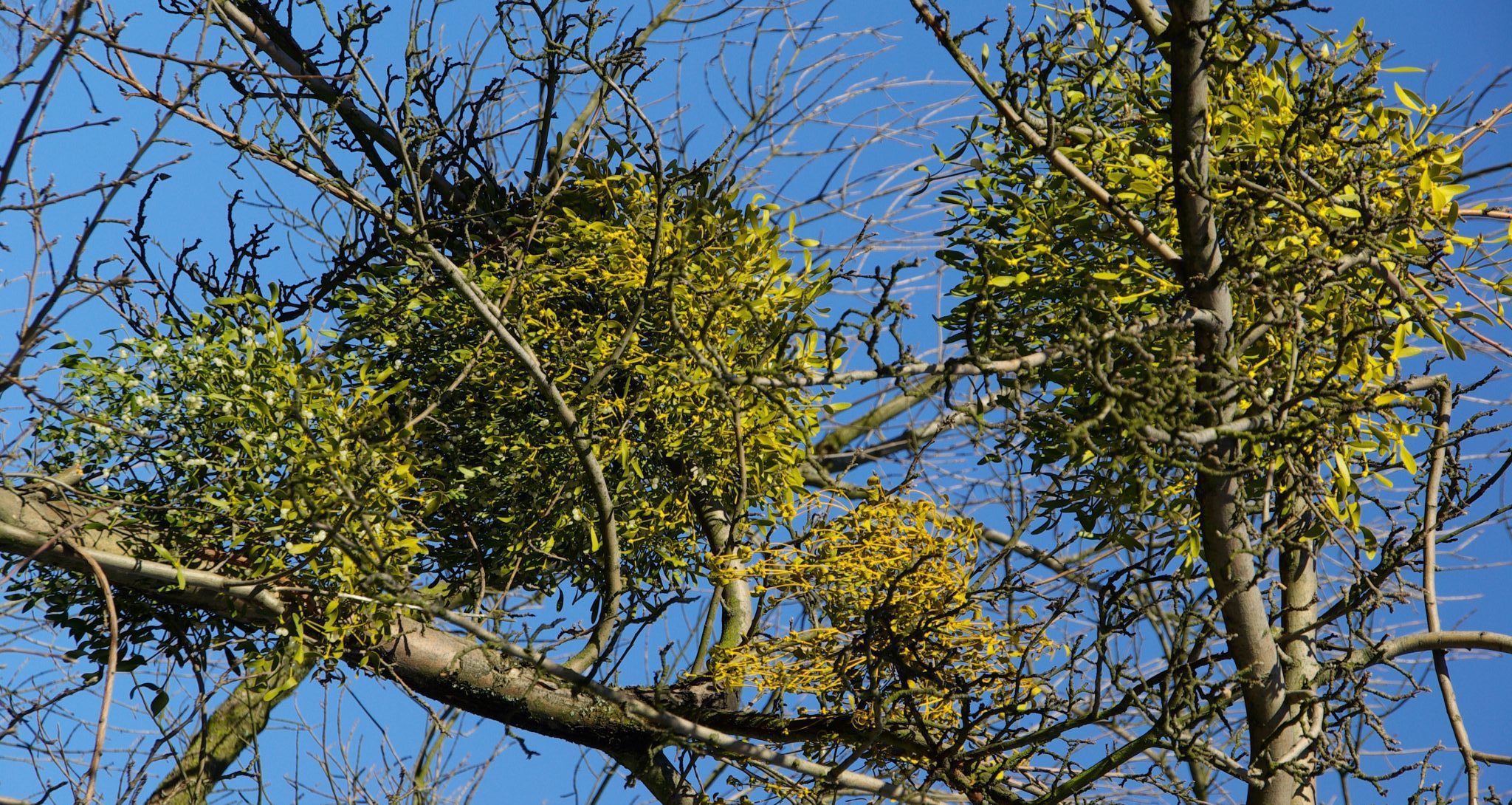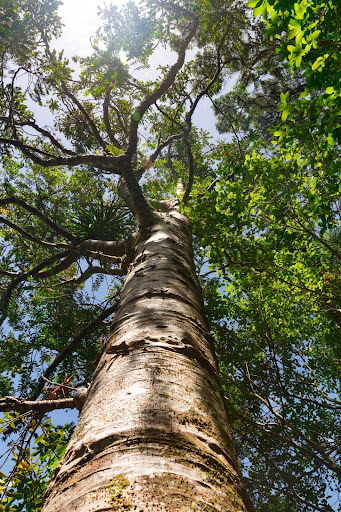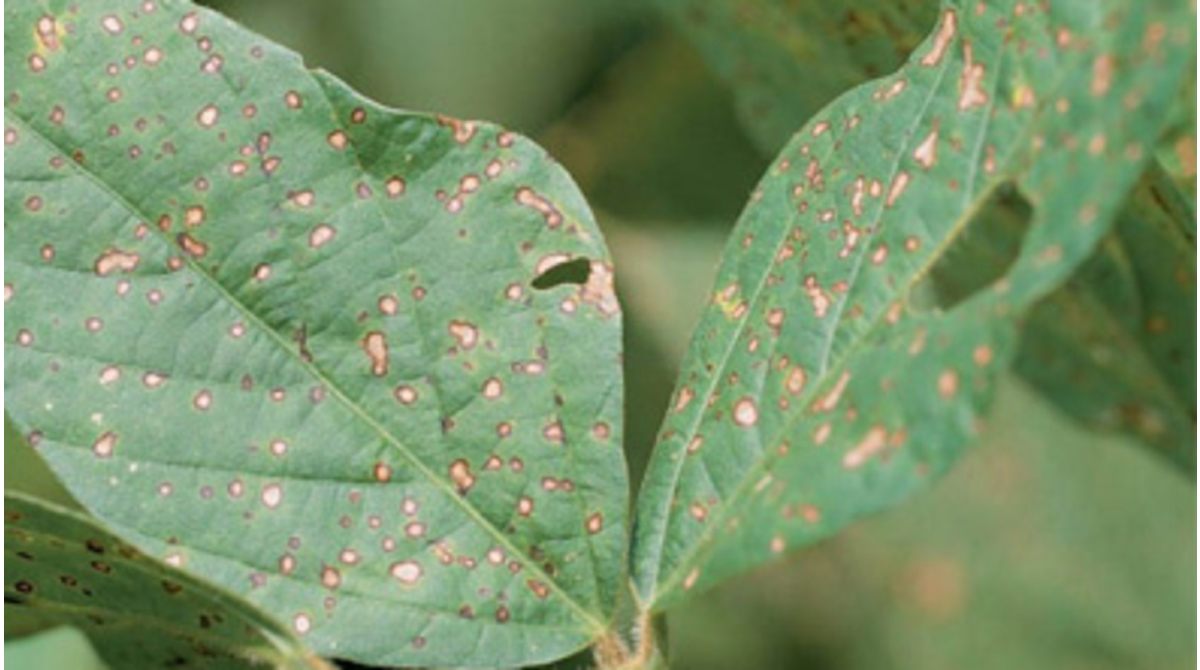
Date January 05, 2023
Category
For many North Texans, mistletoe is a festive holiday decoration hung in sprigs hoping for a holiday kiss. However, for our trees, this can mean the kiss of death! In nature, mistletoe is a plant parasite that can infest many Dallas/Fort Worth tree species, leading to their decline and death if left untreated. Understanding the causes, symptoms, and treatment is imperative to proactive tree care. This blog post will uncover the truth behind mistletoe on North Texas trees so you can keep your landscape safe this season and beyond.
What is Mistletoe?
Mistletoe is the common name for many species of hemiparasitic plants in the Santalales family. Unlike common North Texas tree diseases and pathogens, mistletoe is a plant parasite that attaches to host trees and shrubs, extracting water and nutrients. While mistletoe leaves produce some food internally, the plant cannot survive on its own.
Why Do We Kiss Under Mistletoe?
The parasite’s romantic origins are unknown but can be traced back to Celtic Druids, Norse mythology, and ancient Greece. Since mistletoe can blossom during the winter, our predecessors viewed it as a symbol of fertility, vivacity, and love.
Is Mistletoe Bad for DFW Trees?
Mistletoe is a plant parasite siphoning water and nutrients from its host plant to survive. While low mistletoe populations may not show noticeable effects on plant health, infestations will grow and interrupt the tree’s nutrient cycle, leading to a loss of vigor and greater susceptibility to other environmental stressors. Trees recovering from disease, infestation, drought, or other stressors are more easily affected by mistletoe and have a greater risk of damage.
Which North Texas Trees Are Susceptible to Mistletoe?
This parasitic plant can attack many DFW trees and shrubs, including oaks, pecan, hickory, red maple, and hackberry trees. However, the most common victim of mistletoe in North Texas is cedar elm trees.
Mistletoe Identification
Mistletoe on trees can be recognized by their small, leathery green leaves and white, pink, or red berries. As they mature, they can grow into thick, rounded masses of branches and stems, also called witches’ brooms, and each mistletoe mass is an individual plant. During the winter, mistletoe is easily spotted in the bare canopies of deciduous trees, as mistletoe leaves remain green after the host tree leaves have dropped. Look for ball-shaped masses up to 3 feet wide connected to bare branches.
If you notice signs of mistletoe on your trees, call one of our tree experts in North Texas at (817) 592-6846 for the best tree treatment before it’s too late!
Mistletoe Symptoms on North Texas Trees
Healthy trees can often tolerate a few mistletoes at the cost of weakened or dead individual branches. Heavily infested trees may experience reduced vigor, predisposing them to other insects and pathogen attacks, stunted growth, and premature death, especially if they are recovering from underlying stressors like drought or disease. Other symptoms include:
- Swelling at the mistletoe attachment point
- Reduced growth and vigor
- Withered or dead branches
- Premature mortality
How Does Mistletoe Spread in North Texas?
Birds are the primary source for spreading mistletoe parasites. Berries ripen between October to January, depending on the species. Birds eat the berries and pass the seeds coated in sticky film onto tree branches.
Best Treatment for Mistletoe Infestations
There is no universally effective chemical treatment for mistletoe on trees. The best way to prevent the spread and damage of mistletoe is by identifying and removing mistletoe as soon as possible. Since this plant develops root structures in the host tree’s sapwood, the branch must be completely removed to prevent regrowth. Regardless of the severity, removing mistletoe from trees before fruit production will be more manageable and easier to control. Once berries are produced, mistletoe can quickly spread to nearby trees and shrubs.
Luckily, winter is the perfect time for annual tree trimming and pruning, regardless of whether your tree is infested with mistletoe. A TreeNewal Dallas tree surgeon can expertly prune your trees to effectively manage tree pests and diseases while improving their overall health and structure.
If your trees show signs of mistletoe, it’s critical to contact an ISA Certified Arborist for a consultation. Without the skills and expertise of a DFW tree care specialist, removing mistletoe can lead to tree topping, which weakens the tree, destroys its natural form, and leaves it in poor health condition.
TreeNewal Tree Disease Management
Now that you know the sinister truth and potential damage mistletoe can cause North Texas trees, you can take the proper measures to keep them safe. Keeping your trees on a routine maintenance and prevention schedule prescribed by an ISA Certified Arborist ensures your landscape stays beautiful year-round.
As a full-service tree care company, TreeNewal offers residential and commercial tree services in Dallas, Fort Worth, Argyle, Flower Mound, Denton, Southlake, and Westlake. If you need expert advice, our ISA Certified Arborist can visit your property, assess your trees, and provide recommendations for improving their health. When it comes to professional tree trimming, insect and disease management, tree nutrition, and more, our Dallas tree care specialists are the best in the business. TreeNewal is committed to promoting North Texas tree health, protecting customer investments, and preserving the sustainability of our beloved communities. Contact us today at (817) 592-6846 to learn how we can improve your landscape!








